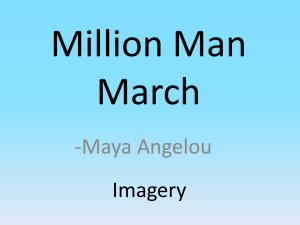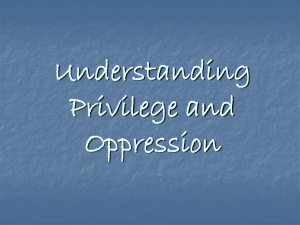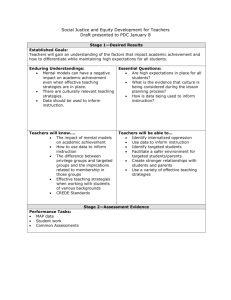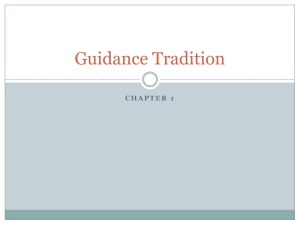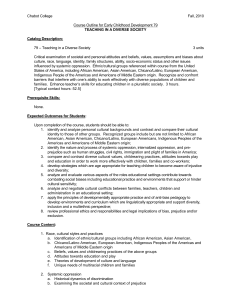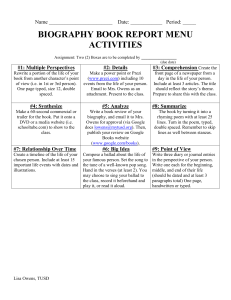freedom song handout.. - Civil Rights Teaching
advertisement
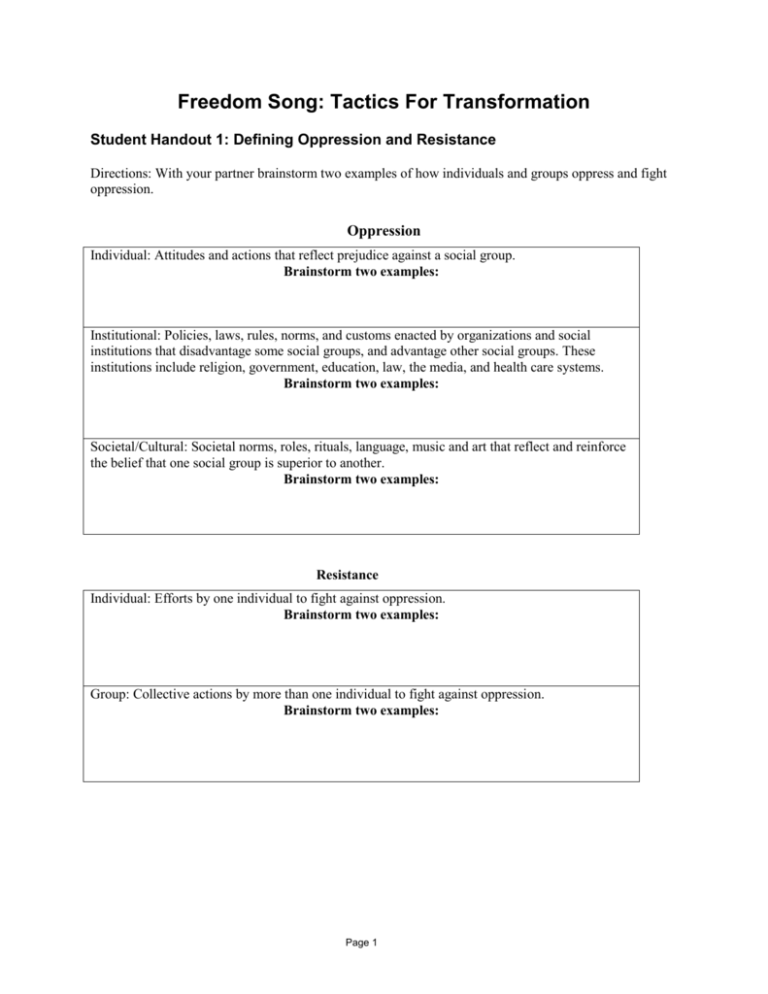
Freedom Song: Tactics For Transformation Student Handout 1: Defining Oppression and Resistance Directions: With your partner brainstorm two examples of how individuals and groups oppress and fight oppression. Oppression Individual: Attitudes and actions that reflect prejudice against a social group. Brainstorm two examples: Institutional: Policies, laws, rules, norms, and customs enacted by organizations and social institutions that disadvantage some social groups, and advantage other social groups. These institutions include religion, government, education, law, the media, and health care systems. Brainstorm two examples: Societal/Cultural: Societal norms, roles, rituals, language, music and art that reflect and reinforce the belief that one social group is superior to another. Brainstorm two examples: Resistance Individual: Efforts by one individual to fight against oppression. Brainstorm two examples: Group: Collective actions by more than one individual to fight against oppression. Brainstorm two examples: Page 1 Student Handout 2: Analyzing Resistance and Oppression in Freedom Song Directions: As students watch Freedom Song they will: Note all examples of resistance or oppression (depending on which word you were assigned to). At assigned times indicated by your teacher you will share your examples with your partner. After sharing with your partner, you will be required to note your partner’s answers. If your partner finds answers that you miss please add to matrix. My examples of Resistance or Oppression Segment Number One Segment Number Two Segment Number Three Segment Number Four Page 2 My Partner’s Examples of Resistance or Oppression Teacher Handout: Synopsis and Film Guide to Freedom Song Note for Teacher: The synopsis provided, also located on http://alt.tnt.tv/movies/tntoriginals/freedomsong/, is critical for debriefing the movie. The film guide provides teachers with examples and opportunities to process this experience with students. In addition there is a supplemental reading associated with this lesson that provides a brief history of the Student Non-Violent Coordinating Committee (SNCC). At the end of each major segment teachers should stop and allow students to note examples of resistance or oppression. Owen Walker is a “typical” African-American child growing up in the small town of Quinlan, Mississippi. His first childhood memories are happy ones. But when his father, Will Walker, attempts to challenge segregation in Quinlan, Owens’s world quickly changes. Owens’s family is threatened and Whites force his father out of business. But the memory that will haunt Owen is one in which he is personally introduced to the ways of racism. When Owen wanders into the “Whites Only” diner at the bus terminal, a young white man forces Will to publicly discipline him. Owen is angry with his father, though Will promises him that one day they will sit at the counter of that diner together. Stop at Segment Number One Teachers should encourage students to outline one example of resistance (Will Walker challenging oppression in Quinlan) and one example of oppression (Will Walker having to publicly beat his child at the bus stop). Teacher should ask students the following questions to assist their thinking: How is starting your own business a way of resisting an oppressive system? Why would Owen by angry with his father? Did Owens’s father have many other options? Owens’s resentment for his father grows over the years. When he hears of the sit-ins at Woolworth's in North Carolina, he is inspired to join the growing Movement. But for years his friends have already been meeting with T-Bone, the local barber who has been teaching them about civil rights and preparing them for the coming change. Jonah Walker, Owens’s uncle, attempts to organize a local chapter of the NAACP. The KKK terrorizes the meeting by coming in and threatening the participants of the meeting. The KKK intimidates the individuals at the meeting by asking for a list of participants in the meeting. Stop at Segment Number Two: At this point of the movie there are many examples of resistance that emerge in the narrative. Students will see forms of resistance at the national level with a scene from the sit-in at Woolworth’s in Nashville and the examples of the Freedom Riders who are trying to desegregate interstate bus lines. On the local level the scene of T-Bone in the barbershop highlights the intense amount of preparation that local activists undertook to lay the groundwork for the more organized resistance that will occur later in the movie. The slow but steady work of Jonah and TBone in Quinlan would be particularly useful for a teacher to highlight. Teachers should guide the students who are analyzing oppression in the film to examine the multiple forms of intimidation utilized to keep African-Americans in their place. Page 3 Teacher could ask the following questions to guide their student’s thinking after Segment Number Two: Why does T-Bone counsel the students with the phrase: “Stay Ready. Keep from Having to Get Read.”? After the KKK attempts to intimidate Jonah (Owen’s uncle) from starting a local chapter of the NAACP, why do you think Jonah makes reference to owning his owning his own property? Why would owning and maintaining your own property be a source of pride and resistance for African Americans? Then a black man appears in Quinlan—he is a teacher from Chicago named Daniel Wall. He has come to Quinlan at the request of local adults to help them organize their determined drive to obtain their citizenship rights. Owens’s friends become involved in the drive, teaching people how to pass the literacy tests so that they can register to vote. Owens’s father forbids his involvement, knowing all too well that people have paid with their lives for doing this work. However, Owen persists. A few people are allowed to register, but soon the white establishment makes it impossible for them to pass the voter registration test and Daniel is arrested. Stop at Segment Number Three: At this point of the movie students should be familiar at identifying examples of resistance and oppression. Daniel begins to empower the local students by giving them leadership roles in teaching at the literacy schools. The local residents armed with increased knowledge of how to pass literacy tests register to vote. The registrar, however, in a savvy show of institutional oppression creates questions that are impossible to answer. The teacher should point out to students that when Daniel is arrested he takes note of the police officer’s badge number as well as alluding to his right to call an attorney when he is arrested. Students should understand it is an example of resistance when African Americans openly questioned the local power structure. Daniel's arrest prompts the arrival of more SNCC (Student Nonviolent Coordinating Committee) members. Daniel is released and goes into the rural countryside to register voters. Meanwhile, the SNCC members educate Owen and his friends on the practice of nonviolent protest. Owen disobeys his parents and helps with the first sit-ins staged in Quinlan. Before Owen himself can sit at a counter, two groups of sit-in demonstrators are arrested and the tension between Whites and Blacks escalates. Daniel Wall's attempts to register voters in the country are met with violence. An official from the U.S. Justice Department is called in to help protect Owens’s uncle Jonah and Daniel, but his presence only makes things worse. Jonah is killed for his involvement, though no charges are brought against his murderer. Stop Segment Number Four Students should be writing furiously during this section of the movie. Examples of resistance include: SNCC role-plays to assist students in confronting anger, the act of canvassing in the local community, the establishment of Freedom Schools and Nonviolent High, the care and Page 4 support from local community members (SNCC activists are fed, allowed to ride in taxi-cars for free, T-bone gives free haircuts), Owens’s dad takes him to the property he is building (continuing the theme of ownership as a form of resistance), the debate and engagement of a SNCC meeting, Owen encourages his mother to stand-up to her employer, and the attempts by the students to integrate the local library and the Woolworth counter. Students will see in this section of the movie that increased resistance equals increased violence in the town of Quinlan. As Daniel tries to organize the rural part of the county students should see the sign in a scene that states, “This is Klan Country—Nigger Read and Run.” Other examples of oppression include: the library being closed when students attempt to integrate, the white owner and his employees sitting down at Woolworth’s counter rather then allow the students to sit, the discriminatory comments that are made by Owens’s mother’s employer after increased activities by local African Americans, the beatings of the backcountry residents who attempt to register, the death of Owens’s uncle Jonah, and ultimately the failure of the legal system to prosecute his murderer. Teachers should ask students the following questions to assist their thinking: How is singing a form of resistance in the movie? What do you think the SNCC worker means when he states, “You a tough guy—not tough enough to be non-violent?” Why did the SNCC workers assign the homework they did? Why did they have students sing as they left? How is the following quote from the film an example of oppression? “God made us to be separate—he must have a reason—finally I realized he wants each of us to know our place and stay in it—otherwise there will be disorder—and God does not want disorder.”— Owens’s mother’s employer Jonah's death concerns the NAACP, which withdraws its support. But just when it looks as though the Movement is over in Quinlan, the high school students take to the streets in peaceful protest of the expulsion of one of the sit-in demonstrators. Using techniques they learned from SNCC, the protesters face the white authorities of the town. When they refuse to obey the order to disperse, many are beaten and some, including Owen, are arrested. After the protestors spend a harrowing time in jail, the NAACP posts bail and they are released. Owen discovers that members of another civil rights group, CORE (Congress of Racial Equality), have learned of the students' march and arrest and have taken up their cause. He realizes that in his way, he has helped the Movement—just as his father and mother helped forward integration in their way. He understands that there are many ways to “fight” against injustice. Through all of these efforts great and small, the bus terminal diner—the scene of Owens’s humiliation—is finally desegregated, and Owen and his father are served at the counter. Quinlan becomes the training ground for those continuing the work of the Movement in Mississippi and lights the way in the ongoing struggle to further democracy in America. Page 5
